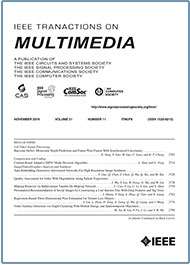- Our Story
- Publications & Resources
- Publications & Resources
- Publications
- IEEE Signal Processing Magazine
- IEEE Journal of Selected Topics in Signal Processing
- IEEE Signal Processing Letters
- IEEE/ACM Transactions on Audio Speech and Language Processing
- IEEE Transactions on Computational Imaging
- IEEE Transactions on Image Processing
- IEEE Transactions on Information Forensics and Security
- IEEE Transactions on Multimedia
- IEEE Transactions on Signal and Information Processing over Networks
- IEEE Transactions on Signal Processing
- IEEE TCI
- IEEE TSIPN
- Data & Challenges
- Submit Manuscript
- Guidelines
- Information for Authors
- Special Issue Deadlines
- Overview Articles
- Top Accessed Articles
- SPS Newsletter
- SigPort
- SPS Resource Center
- Publications Feedback
- Publications FAQ
- Blog
- News
- Dataset Papers
- Conferences & Events
- Community & Involvement
- Professional Development
- For Volunteers
- Information for Authors-OJSP
-
Home
Conferences Events IEEE JSTSP Article IEEE Signal Processing Magazine IEEE TIFS Article IEEE TMM Article IEEE TSP Article Jobs in Signal Processing Lectures Machine Learning Seasonal Schools Signal Processing News SPM Article SPS Distinguished Lectures SPS Newsletter Article SPS Webinar SPS Webinars SPS Webinar Series Webinar webinars
-
Our Story
What is Signal Processing?

The technology we use, and even rely on, in our everyday lives –computers, radios, video, cell phones – is enabled by signal processing. Learn More » -
Publications & Resources
-
SPS Resources
- Signal Processing Magazine The premier publication of the society.
- SPS Newsletter Monthly updates in Signal Processing
- SPS Resource Center Online library of tutorials, lectures, and presentations.
- SigPort Online repository for reports, papers, and more.
- SPS Feed The latest news, events, and more from the world of Signal Processing.
-
SPS Resources
-
Conferences & Events
-
Community & Involvement
-
Membership
- Join SPS The IEEE Signal Processing Magazine, Conference, Discounts, Awards, Collaborations, and more!
- Chapter Locator Find your local chapter and connect with fellow industry professionals, academics and students
- Women in Signal Processing Networking and engagement opportunities for women across signal processing disciplines
- Students Scholarships, conference discounts, travel grants, SP Cup, VIP Cup, 5-MICC
- Young Professionals Career development opportunities, networking
- Get Involved
-
Technical Committees
- Applied Signal Processing Systems
- Audio and Acoustic Signal Processing
- Bio Imaging and Signal Processing
- Computational Imaging
- Image Video and Multidimensional Signal Processing
- Information Forensics and Security
- Machine Learning for Signal Processing
- Multimedia Signal Processing
- Sensor Array and Multichannel
- Signal Processing for Communication and Networking
- Signal Processing Theory and Methods
- Speech and Language Processing
- Technical Working Groups
- More TC Resources
-
Membership
-
Professional Development
-
Professional Development
- Mentoring Experiences for Underrepresented Young Researchers (ME-UYR)
- Micro Mentoring Experience Program (MiME)
- Distinguished Lecturer Program
- Distinguished Lecturers
- Distinguished Lecturer Nominations
- Past Lecturers
- Distinguished Industry Speaker Program
- Distinguished Industry Speakers
- Distinguished Industry Speaker Nominations
- Industry Resources
- IEEE Training Materials
- Jobs in Signal Processing: IEEE Job Site
-
Career Resources
- SPS Education Program Educational content in signal processing and related fields.
- Distinguished Lecturer Program Chapters have access to educators and authors in the fields of Signal Processing
- PROGRESS Initiative Promoting diversity in the field of signal processing.
- Job Opportunities Signal Processing and Technical Committee specific job opportunities
- Job Submission Form Employers may submit opportunities in the area of Signal Processing.
-
Professional Development
-
For Volunteers
-
For Board & Committee Members
- Board Agenda/Minutes* Agendas, minutes and supporting documentation for Board and Committee Members
- SPS Directory* Directory of volunteers, society and division directory for Board and Committee Members.
- Membership Development Reports* Insight into the Society’s month-over-month and year-over-year growths and declines for Board and Committee Members
-
For Board & Committee Members
Popular Pages
Today's:
- Submit a Manuscript
- Information for Authors
- IEEE Transactions on Multimedia
- SPS Scholarship Program
- IEEE/ACM Transactions on Audio Speech and Language Processing
- IEEE Signal Processing Letters
- IEEE Transactions on Image Processing
- 404 Page
- Signal Processing 101
- (ISBI 2025) 2025 IEEE International Symposium on Biomedical Imaging
- Conferences & Events
- IEEE Journal of Selected Topics in Signal Processing
- IEEE JSTSP Special Series on AI in Signal & Data Science - Toward Explainable, Reliable, and Sustainable Machine Learning
- IEEE Transactions on Information Forensics and Security
- (MLSP 2024) 2024 IEEE International Workshop on Machine Learning for Signal Processing
All time:
- Information for Authors
- Submit a Manuscript
- IEEE Transactions on Image Processing
- 404 Page
- IEEE/ACM Transactions on Audio Speech and Language Processing
- IEEE Transactions on Information Forensics and Security
- IEEE Transactions on Multimedia
- IEEE Signal Processing Letters
- IEEE Transactions on Signal Processing
- Conferences & Events
- IEEE Journal of Selected Topics in Signal Processing
- Information for Authors-SPL
- Conference Call for Papers
- Signal Processing 101
- IEEE Signal Processing Magazine
Last viewed:
- Recent Advances of Deep Learning within X-ray Security Imaging
- SPS Staff
- Organize Local Initiatives
- Editorial Board
- IEEE Signal Processing Letters
- Practical Backscatter Communication Systems for Battery-Free Internet of Things: A Tutorial and Survey of Recent Research
- EDICS
- Information for Authors
- 404 Page
- Society Liaisons/Representatives
- Submit a Manuscript
- SPS Conference Sponsorship Information
- SPS Scholarship Program
- Saudi Arabia
- Awards & Submit Award Nomination
End-to-End Instance-Level Human Parsing by Segmenting Persons
You are here
TMM Menu
Publications & Resources
- Publications & Resources
- Publications
- Submit a Manuscript
- Editorial Board Nominations
- Challenges & Data Collections
- Publication Guidelines
- Information for Authors
- Special Issue Deadlines
- Overview Articles
- Top Accessed Articles
- SPS Newsletter
- SigPort
- SPS Resource Center
- Publications Feedback
- Publications FAQ
- Blog
- News
For Authors
Top Reasons to Join SPS Today!
1. IEEE Signal Processing Magazine
2. Signal Processing Digital Library*
3. Inside Signal Processing Newsletter
4. SPS Resource Center
5. Career advancement & recognition
6. Discounts on conferences and publications
7. Professional networking
8. Communities for students, young professionals, and women
9. Volunteer opportunities
10. Coming soon! PDH/CEU credits
Click here to learn more.
End-to-End Instance-Level Human Parsing by Segmenting Persons
Instance-level human parsing is aimed at separately partitioning the human body into different semantic parts for each individual, which remains a challenging task due to human appearance/pose variation, occlusion and complex backgrounds. Most state-of-the-art methods follow the “parsing-by-detection” paradigm, which relies on a trained detector to localize persons and then sequentially performs single-person parsing for each person. However, this paradigm is closely related to the detector, and the runtime is proportional to the number of persons in an image. In this paper, we present a novel detection-free framework for instance-level human parsing in an end-to-end manner. We decompose instance-level human parsing into two subtasks via a unified network: 1) semantic segmentation for pixel-level classification as a human part and 2) instance segmentation for mask-level classification as a person. The framework can directly predict the human-part semantic mask for all persons and binary masks for instance-level persons in parallel. The parsing result of each person can be acquired via a Hadamard product between the human-part semantic mask and the corresponding person's binary mask. Extensive experiments demonstrate that our proposed method performs favorably against state-of-the-art methods on the CIHP and MHP v2 datasets.
SPS ON X
- THIS WEEK: Join NASA’s Dr. Jacqueline Le Moigne as she shares her journey through academia, the private sector, and pivotal roles at NASA, emphasizing her work in signal processing, computer vision, and related technologies. Register now! https://x.com/IEEEsps/status/1785057479606288505
- Join NASA’s Dr. Jacqueline Le Moigne for this interactive webinar as she shares her journey through the realms of signal processing, computer vision, and related technologies, including her pivotal roles at NASA. https://x.com/IEEEsps/status/1782468413551423536
- Great crowd at the Student Job Fair at #ICASSP2024! Thank you to our sponsors for furnishing an exciting, engaging event! https://x.com/IEEEsps/status/1780817453569687559
- Thank you to our Women in Signal Processing Luncheon panelists for their wisdom and insights during today’s event at #ICASSP2024! https://x.com/IEEEsps/status/1780458637338530252
- Free Machine Learning (ML) Lecture Series from IEEE SPS From basics to recent advances, unlock the secrets of ML with Prof. Sergios Theodoridis! https://x.com/IEEEsps/status/1779931297093222415
Home | Sitemap | Contact | Accessibility | Nondiscrimination Policy | IEEE Ethics Reporting | IEEE Privacy Policy | Terms | Feedback
© Copyright 2024 IEEE – All rights reserved. Use of this website signifies your agreement to the IEEE Terms and Conditions.
A not-for-profit organization, IEEE is the world's largest technical professional organization dedicated to advancing technology for the benefit of humanity.








